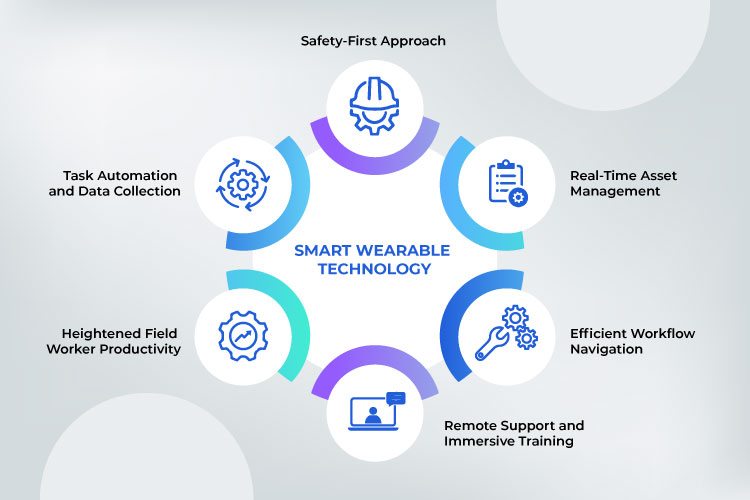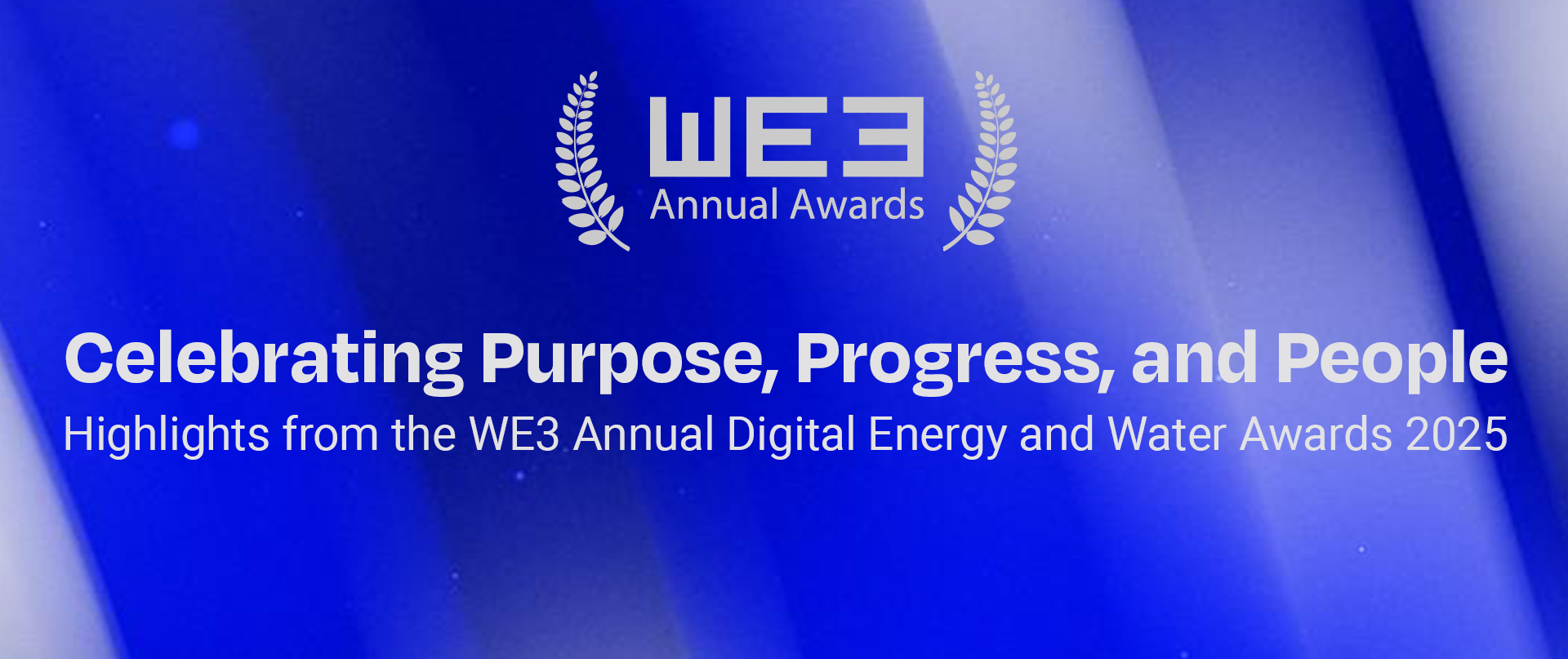Master Blog
Utility Service Excellence : Ensuring Uninterrupted Mission-Critical Deliveries with Wearable Technology

Today, utility field workers navigate through the intricate web of infrastructure ranging from DERs, complex smart grids, smart meters, EV charging infrastructure and connected assets to ensure not just grid resiliency but also deliver a superior experience to the end customer. Navigating complex infrastructure requires precision. The utility industry operates in real-time, and any delay can have far-reaching consequences. Utility field operations are akin to navigating uncharted territories, often fraught with challenges that demand ingenious solutions. From complex infrastructure management to ensuring the well-being of field workers, the stakes are high.
Traditional methods such as handheld devices and paper based approach for work manuals, knowledge management and documentation often fall short, leading to operational hiccups and safety concerns that can't be left to chance. As utility field operations evolve, the tools for the field workers must evolve accordingly. Imagine a utility field worker stepping into the field where every task is at their fingertips, where information flows seamlessly, and where safety is not just a priority but a way of life.
Welcome to the future of utility field operations – an ecosystem driven by Smart Wearable Technology. Smart wearable technology refers to electronic devices that can be worn as accessories, embedded in clothing, or even implanted in the body. These devices are equipped with advanced sensors, connectivity features, and computational abilities to perform specific functions and provide valuable data. The primary distinguishing feature of smart wearables is their ability to connect to other devices or networks, enabling data exchange and communication. Examples of smart wearables include smartwatches, fitness trackers, augmented reality (AR) headgears, smart rings and smart clothing. In the utility industry, leveraging smart wearables can be a game-changing strategy for executing mission-critical operations.
The primary distinguishing feature of smart wearables is their ability to connect to other devices or networks, enabling data exchange and communication
Let’s explore the varieties of smart wearables and delve into how these ground-breaking innovations can effectively address the challenges within the utility sector.
Types of Wearables Shaping Utility’s Future : Beyond the Ordinary
- AR-Powered Head-Mounted Gears : Transforming the field worker's line of sight, AR (augmented reality) enabled headgears facilitate digital overlays that turn the physical world into an interactive dashboard, providing hands-free access to critical information. This hands-free access to information enhances decision-making and situational awareness without compromising on field worker safety. Moreover, utilizing AR-powered headgear empowers field personnel to capture data and access digital manuals seamlessly through voice-based commands.
- Smart Watches : Smartwatches act as centralized hubs on the wrists of field workers, enabling smooth communication with customers and the back office through real-time notifications. Instant updates regarding customer or asset appointments, tasks, schedules, and emergencies are just a glance away. With smart watches, Field workers have the option to employ SOS features, enabling them to alert their teams with a simple tap.
- Wearable Sensors : Embedded sensors are like silent guardians, keeping a vigilant eye on environmental conditions. Wearable sensors enable the collection of valuable data related to worker performance, equipment usage, and environmental conditions. From gas leaks to extreme temperatures, wearables equipped with sensors ensure field workers are alerted to potential hazards in real time.
- Smart Rings: Smart rings can be used for quick communication, allowing field workers to send and receive messages without reaching for a phone or another device. Smart rings are essentially compact rings with features like fitness tracking, notifications, and gesture controls. Smart rings with GPS or location-tracking capabilities, can empower utility managers to monitor the location of field workers for safety and logistical purposes.
Mission Critical Applications of Smart Wearable Technology
- Safety-First Approach – Head-mounted smart wearables, such as head-mounted gears, prioritize the safety of field technicians by providing hands-free communication through integrated microphones and speakers. This feature enables field workers to stay connected without distractions, fostering a safer and more responsive work environment. In critical appointments, these wearables empower field workers to utilize both hands, allowing them to focus on the task at hand. Wearables like smartwatches not only monitor environmental conditions but also track the health and well-being of field workers. In emergencies, these wearables trigger immediate assistance, prioritizing safety for the field personnel.
- Real-Time Asset Management – Augmented reality powered headsets provide field workers with real-time insights into asset details, maintenance history, and operation manuals, ensuring precise and informed decision-making on the spot. They can navigate information manuals using voice-based commands, eliminating the necessity for handheld devices.
- Efficient Workflow Navigation - Smartwatches equipped with GPS and navigation capabilities guide workers through optimized routes, minimizing travel time and maximizing productivity. By leveraging smart watches, field workers can accept, reject and update appointments with one tap on their smartwatches anytime, anywhere.
- Remote Support and Immersive Training – Augmented reality-enabled smart headgear empowers field workers to engage with experts, allowing them to provide guidance, troubleshoot issues, or offer assistance in real-time. Through voice-based commands, they can also share pertinent documents and manuals to address the pressing issues swiftly. These wearables also offer immersive training scenarios, allowing field workers to practice complex tasks in a risk-free virtual environment.
- Heightened Field Worker Productivity - Field workers can receive data and information directly through wearables, reducing the need to consult paper documents or handheld devices. Smart wearables streamline workflows by providing hands-free access to crucial data and instructions, reducing task completion times. GPS-enabled wearables allow utility managers to track the location of field workers. This is particularly useful for ensuring worker safety, optimizing routes, and coordinating tasks efficiently.
- Task Automation and Data Collection - Smart Wearable sensors can automate certain tasks based on predefined criteria or conditions. This can include sending alerts, adjusting equipment settings, or triggering specific actions without manual intervention. Smart Wearables also enable the collection of valuable data related to worker performance, equipment usage, and environmental conditions.

As the utility sector steers through its transformative journey, smart wearable technology stands tall as a beacon of innovation. From mitigating challenges to redefining efficiency, wearables are not just accessories; they are catalysts for change. Today, adopting smart wearable technology isn't merely a choice; it's a strategic imperative. It's not just about achieving operational efficiency; it's about enabling an immersive, secure, and connected workforce experience. In an ecosystem blending challenges and innovation, smart wearables emerge as the silent heroes, offering unparalleled efficiency, safety, connectivity and immersive experience. The future of utility field operations has arrived, embodied in the wearables adorning your wrist and perched upon your head – heralding an era marked by uninterrupted and mission-critical deliveries.
SmartWX is the #1 Digital Workforce Experience (WX) platform for energy, water and gas providers worldwide. SmartWX helps intelligently manage the field operations to make the service experiences effortless for the end customers. From work order management to AI/ML-based schedule and dispatch, SmartWX delivers real-time visibility into the workforce with simple, intuitive platform experiences, improves operational efficiency and assures seamless service delivery.





